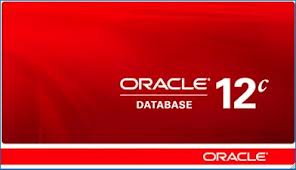Faster and Efficient
- "First multi-tenant database in the world." 12c is what Ellison (Larry Ellison, CEO, Oracle) calls a "container database." It's function is to hold lots of other databases, keeping their data separate, but allowing them to share underlying hardware resources like memory or file storage.
- With 12c, Ellison promises that Oracle databases will get faster, saying that compared to the current database, Oracle 11, 12c "uses one-sixth as much hardware and runs five times as many databases."
- The new hardware version (Exadata x3) can run a mind-boggling amount of data in memory in real time. With this new hardware you "can ask a question and get an answer at the speed of thought," Ellison said. Ellison claims that with x3, enterprises won't need to buy traditional storage from companies like EMC or Hitachi anymore.
Read the complete article here: http://www.businessinsider.com/larry-ellison-oracle-has-invented-a-new-kind-of-database-2012-9
Easy, Convinent and Resource Friendly
- Database 12c also makes much more efficient use of hardware resources, saving companies money, Mendelsohn (Andy Mendelsohn, Senior vice VP, Oracle) said. For example, it incorporates a "heat map" feature that tracks how frequently different chunks of data are used, allowing customers to archive rarely accessed information on lower-cost mediums.
- Database upgrades and patches are made simpler than in the past thanks to the pluggable database concept, Mendelsohn said. "When you [patch] that one container database, you effectively patch all of them."
- Backup and recovery efforts benefit as well, allowing administrators to back up the system as one unit but recover at the pluggable database level.
Read the complete article here: http://www.computerworld.com/s/article/9231944/Oracle_sheds_more_light_on_database_12c_Exadata_X3
Appliance based
- A new Exadata Database Machine to be announced (now already announced) at Open World will undoubtedly exploit the database virtualization capabilities of the 12c database.
Read the complete article here: http://www.informationweek.com/software/information-management/oracle-12c-database-open-worlds-centerpi/240008073
Oracle Database
Optimizer: An Insider’s View of How the Optimizer Works
Oracle database 12c is the first step on the way to
making an adaptive, or self-learning optimiser.
Alternative subplans are precomputed and stored in the
cursor, so no new hard parsing will be needed as part of the adaption of an
already executing plan. Statistics collectors are included in the plan
execution. If the collectors cross a threshold, the plan might switch during
execution from a nested loops to a hash join.
Information gathered by the optimizer, may prompt
automatic creation of column groups, so next time stats are gathered, the
extended stats will be gathered.
But besides these direct factors about Oracle 12c, there are some more facts that could frame some more pieces about the estimated wire-frame.
Oracle Cloud: Oracle had recently launched its own clouds, and the new database version should be in full sync with these clouds. And as name already suggests, Oracle 12c (here 'c' stands for cloud) would be a cloud optimized product, and might be readily available for the cloud users in form of pre-configured machines (as provided by AWS).
Acquisitions: Recent acquisitions of Taleo, SelectMinds, Collective Intellect, Eloqua, Virtue etc. suggests that Oracle is planning to develop its own stack of cloud-based applications. In future not so far, Oracle might be planning to provide cloud based CRM or ERP apps to compete against its current major threat SAP HANA.
Conclusion
A proper validation/confirmation of this information can be made with the official release from Oracle, but from the information available so far, it seems that Oracle is planning to launch something big. Oracle, as a market leader in databases, is facing lots of expectations from its customers, and since Oracle has taken good time to launch its next release of database, it must be planning for a good surprise not only for its own customers, but also for its competitors.



